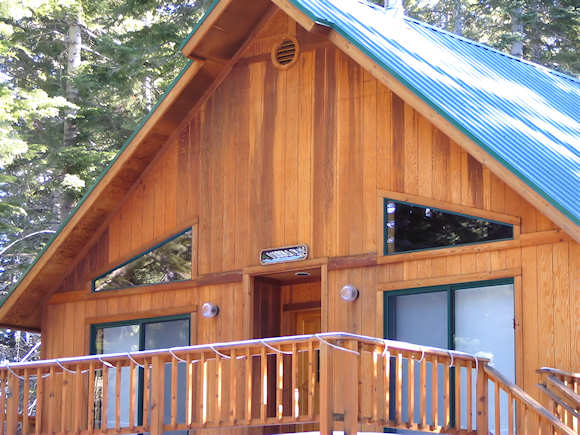
The Ultimate Guide To Energy-Saving Homes
In today’s world, where energy bills seem to climb higher and higher and the planet’s health is a growing concern, it has become necessary for homeowners to find solutions.
It is necessary to make your home more energy-efficient to save money and play your part in protecting the environment. This guide is your key to achieving just that.
We’re here to offer you practical advice and valuable insights on how to turn your home into an energy-saving powerhouse. From easy tweaks to substantial upgrades, we’ll walk you through various steps to help you create a more eco-friendly and budget-friendly living space.
What is Energy Efficiency?
At its core, energy efficiency embodies the practice of achieving the same results while expending less energy. When we talk about energy efficiency in the context of homes, it boils down to implementing clever techniques and technologies to curb energy consumption without sacrificing the comfort or functionality we expect.
So, what exactly does an energy-efficient home entail?
Simply put, it’s a residence that accomplishes the same goals as a traditional dwelling but with a reduced energy footprint. These houses prioritize efficiency in heating, air conditioning, water heating, and powering electronic appliances while keeping the comfort and safety of their occupants intact.
An energy-efficient home isn’t just a nod to environmental consciousness; it also ushers in many benefits. By reducing wasted energy and cutting down on greenhouse gas emissions, it plays a crucial role in environmental preservation.
Furthermore, such homes often foster healthier and cleaner living conditions for those who call them home. And let’s not forget the financial aspect: energy efficiency frequently translates into noticeable savings on your monthly utility bills.
Features of an Energy-Efficient Home
Creating an energy-efficient home involves a thoughtful blend of design, materials, and construction methods that work harmoniously to reduce energy consumption and environmental impact. Let’s delve into the essential features that define an energy-efficient dwelling:
Orientation and Design:
When envisioning your energy-efficient home, consider how it aligns with the sun’s path and natural light and shade. Strategic orientation can significantly reduce the need for artificial energy use.
Sustainable Materials:
A cornerstone of sustainable home design lies in material selection. Opt for materials that boast durability, renewability, and longevity, all while being locally sourced to minimize your ecological footprint.
Construction Method:
Prefabricated construction methods emerge as environmentally friendly alternatives to traditional building practices. They reduce waste production, reduce land disturbance, and often result in superior build quality.
Insulation:
Adequate insulation is pivotal in regulating your home’s temperature. It ensures your home remains cool in summer and warm during winter.
Glazing:
Windows plays a significant role in energy efficiency. Double glazing, for instance, can substantially reduce the energy required for heating or cooling. Complementing this with curtains, blinds, awnings, or shutters further reduces energy consumption.
Energy Efficiency Tips and Tricks
Solar Energy Solutions
Incorporate passive solar design principles by optimizing south-facing windows to harness sunlight during winter. You can simply use shading methods to minimize the summer heat during the summer heat.
In addition to that, you can employ thermal mass materials like concrete or brick to store and release heat gradually. If you want to get a good artificial heating and cooling level, use these insulation strategies effectively.
You can also consider installing solar panels to tap into renewable energy. This will help reduce your reliance on conventional power sources, thereby trimming energy expenses.
Energy-Efficient Lighting
Achieve energy efficiency with simple lighting adjustments. One way is to swap out old incandescent bulbs for LED or CFL options, which use less energy and last longer.
Also, consider installing dimmer switches to customize lighting and save even more energy. Furthermore, don’t forget to switch off lights when leaving a room, and always use natural light during the day.
Lastly, consider motion sensors or timers where lights tend to be left on unnecessarily.
Insulation and Sealing
Keep the chill out in winter and the cool in during summer by amping up insulation in walls, floors, and attics. Seal gaps around windows, doors, and vents to keep your indoor climate comfy year-round.
You can also take it up a notch with high-performance insulation like spray foam or rigid foam board. Use this material to cover key areas like the attic, walls, and basement.
Overall, an adequate combination of insulation and air sealing is a good way to make your home more energy efficient.
Energy-Saving Appliances
Ditch those power-hungry old appliances and opt for ENERGY STAR-rated models. From fridges to dishwashers, washing machines to dryers, choose appliances that sip energy instead of guzzling it.
It’s a win-win – you’ll cut your environmental footprint and see those utility bills shrink.
Harness the Power of Smart Technology
Embrace the digital age’s perks by investing in smart technology. For instance, you can start with a smart thermostat that learns your habits and keeps your home comfy while conserving energy when you’re away.
It’s a simple way to save energy and ensure your space is right.
Conclusion
Every detail matters in the pursuit of energy-efficient homes, from insulation and sealing to energy-saving appliances and smart technology.
When it comes to achieving the pinnacle of eco-friendly living, Longhouse Cedar offers the expertise you need with our custom-cut wooding and cedar products. Contact us today to figure out the role we can play in helping you build a more sustainable and energy-efficient home.
